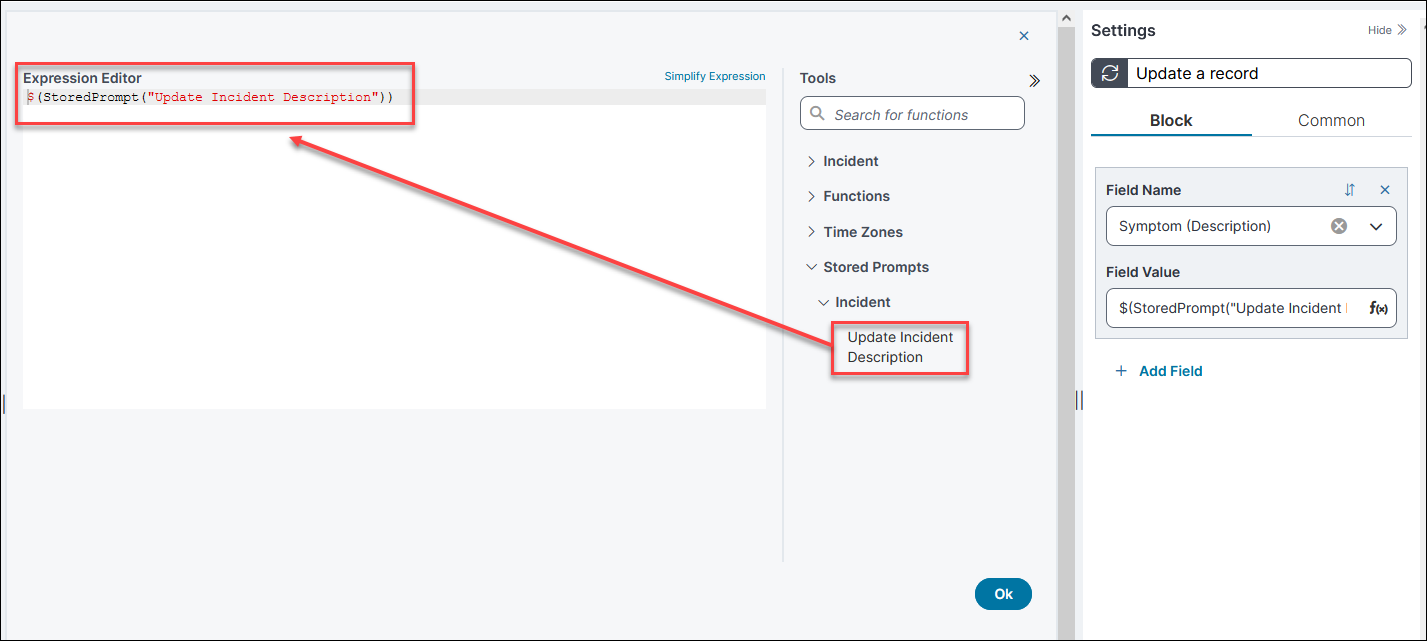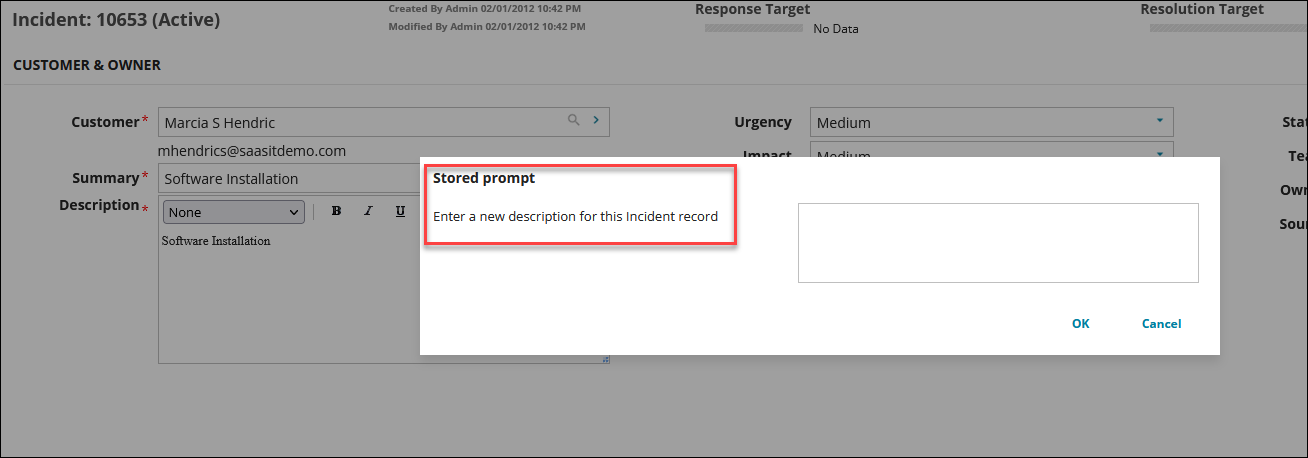Example of Stored Prompts Usage
A prompt is a display window that requires users to provide information before proceeding with a process or action (example: Specify the reason for putting an Incident into Pending status). A stored prompt can be used multiple times within Ivanti Neurons for ITSM anywhere that a Quick Action or an expression is used that involves user interaction.
An an example, this set of steps shows you how to use a prompt to ask a user to update an Incident record description:
Create a Stored Prompt
1.From the Configuration console's Build list, select Stored Prompts.
2.From the Stored Prompts workspace, click Add.
3.Enter these field values for the stored prompt:
|
Field |
Value |
|---|---|
|
Name |
Update Description for Incident Record |
|
Prompt |
Enter a new description for this Incident record. |
|
Association |
Incident |
|
Type |
Text |
|
Character Limit |
Not available when Multi-Line is selected. |
|
Multi-Line |
Selected |
|
Default Value |
Can be left blank |
|
Re-Prompt on each occurrence |
Selected |
|
Max-Prompt Dimension |
800 X 800 |
4.Click the Save icon.
Create a Quick Action
1.Open the Graphical Action Designer.
See: Using the Graphical Action Designer (GAD).
Tip: You can use the Classic Action Designer if you prefer.
2.Create a new block using the Update a Record block type, and name it whatever you choose.
3.In Settings, select the Block tab.
4.Select Symptom (Description) from the drop-down list.
5.Select  in Field Value to open the Simplified Expression Editor.
in Field Value to open the Simplified Expression Editor.
For help, see: Using the Simplified Expression Editor
6.Drag the Stored Prompt (Update Incident Description), listed under Incident into the Expression Editor.
Tip: If a stored prompt can be used with any business object, it will be listed under an Unassociated section under Stored Prompts.
Note: Stored Prompts are not supported in services such as workflows and escalations that run in the background with no user intervention. Make sure your expression isn't evaluated by one of those services.
7.Check that this is the expression for calling your stored prompt: $(StoredPrompt("Update Description")).
Tip: Use the rules in Expression Grammar to help you to write expressions.
8.Click OK.
9.Save your Quick Action.
Verify your Stored Prompt Works
1.Open an Incident record.
2.Click More > No Category > Update Incident Description (Name of Quick Action).
3.Your stored prompt appears.
4.Enter a new description.
5.Click OK.
The contents of the Description field are replaced with those you just entered.

